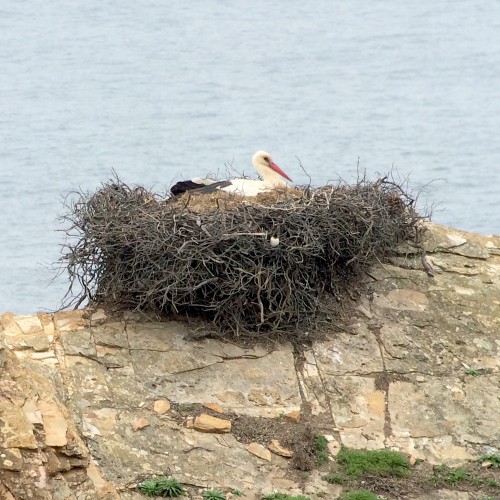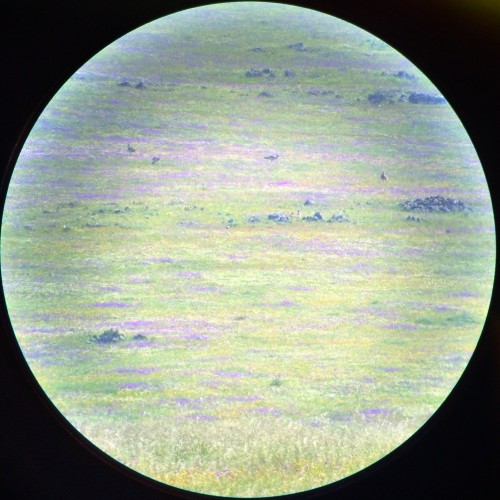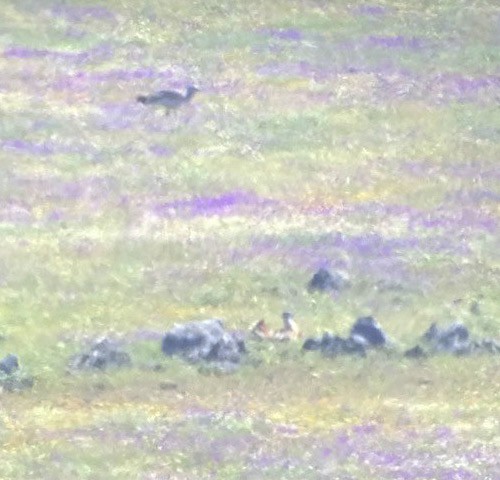I added eight birds to my life list this year, all in Portugal; including two species of vultures, five eagles, two storks, two bustards, bee-eater, roller, hoopoe, golden oriole, two kinds of shrike, two kinds of swift…
Among the species I’d seen before, highlights included Montagu’s Harrier, which is an elegant, long-winged bird of prey that I had wonderful views of; Southern Grey Shrike, which I’d seen before in Morocco and Spain, but certainly never so well; Black Stork, a species I last saw over twenty years ago on the day I did a bungee jump at Victoria Falls; Pallid Swift, because I had previously ticked it on the basis of a somewhat dodgy sighting, so a really good sighting was a weight off my mind (and also because it was picturesque to see them nesting on cliffs overhanging the sea). Bonelli’s Eagle and Golden Eagle are certainly worth mentioning as well, although neither were particularly good views.
And there are all those Mediterranean species which are always a pleasure to see: Black-winged Kite, Short-toed Eagle, Griffon Vulture, Collared Pratincole, Black-winged Stilt, Little Owl, Alpine Swift, Bee-eater, Hoopoe, Golden Oriole, Azure-winged Magpie, Crested Tit, Blue Rock Thrush, Crested Lark, Nightingale, Black-eared Wheatear, Serin, Cirl Bunting.
One of the particular attractions of the trip I took was the unusual cliff-nesting storks. These are White Storks, the ones better-known for nesting on chimneys (and bringing babies). Along this particular bit of the Portuguese coast they’ve developed the habit of nesting on rocks just offshore. I think there are probably at least ten or eleven nests in this picture, although admittedly you may have to take my word for it:

You should at least be able to make out the streaks of guano, and the flying white bird with black wingtips in front of the left-hand rock. Here’s a photo, taken through binoculars, of a nest which was unusually close to the cliff:

Of the eight species I saw which were new, the least interesting was Iberian Chiffchaff: a bird which is effectively identical to the (very common, small, drab) Common Chiffchaff, but with a different song. I didn’t even definitely see one — I saw chiffchaffs that weren’t calling and heard Iberian Chiffchaff singing — but I’m ticking it on the song.
Then there was Western Bonelli’s Warbler, another little greenish bird in the same genus as the chiffchaffs. I have to say, it was a much more attractive bird in person than you would think looking at illustrations; but that’s not saying much.
Black Vulture (or Cinereous Vulture, if you want to avoid confusion with the New World species) is a cracking species — the largest bird of prey apart from the condors, with a wingspan from eight to ten feet — but again, not particularly good views. Spanish Imperial Eagle (or as my Portuguese guide tried to persuade me it was called, Iberian Imperial Eagle) is a majestic species which used to be the rarest eagle in world until good conservation work managed to upgrade it to the second rarest*; there were estimated to be 324 breeding pairs in 2012. Again, though, very distant views.
I also saw some Black-bellied Sandgrouse — the sandgrouse are ground-living desert pigeons, sort of — which was the first sandgrouse I’ve seen in Europe. And quite good views of a pair of Stone Curlew, which is a magnificent, goggle-eyed bird.
But when I booked a birding guide for a day, there were three species I particularly wanted to see: Little Bustard, Great Bustard and European Roller.
The roller is a truly spectacular species, a big electric blue bird the size of a crow with deep, royal blue patches on the wings when it flies. We spent a while watching them, and it would almost certainly be my bird of the year if it hadn’t been my winner for BOTY 2007.
Little Bustard is also a great species, and we saw them reasonably well; but my Bird of the Year 2014 has to be Great Bustard. I believe the world’s heaviest recorded flying bird was a Great Bustard; with the slight caveat that the particular individual may have been too fat to fly. On average it’s the second-heaviest, after Kori Bustard, and it’s a big beast of a thing. Here’s the distant, hazy photo I posted for BOTY:BPiaSR:

Here it is zoomed into the centre a bit, clearly showing five birds:

The two in the middle [enhance! enhance!]:

But what’s so good about bustards is what they do to attract a mate. Stick with this video for at least a couple of minutes to get the full effect:
Amazing. I didn’t get views like that, sadly, but I did see them a bit closer than in my photos, and I did see them displaying, and they are brilliant birds.





